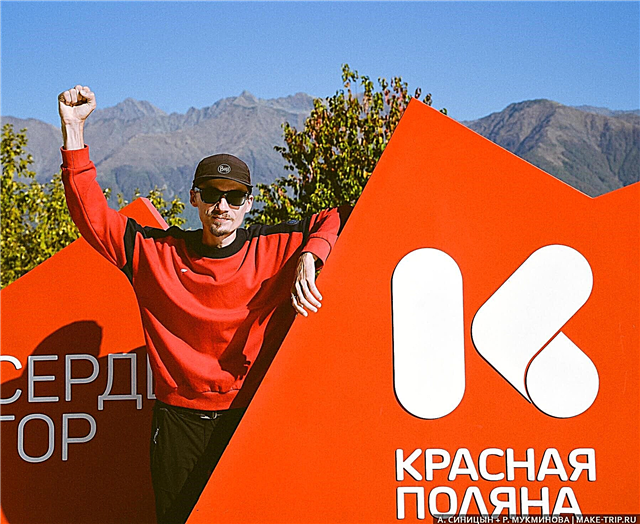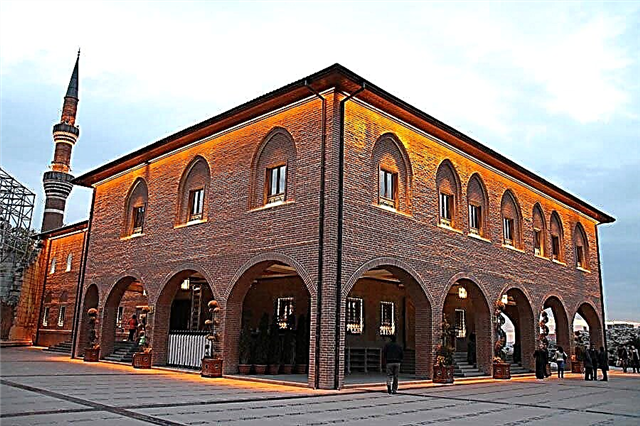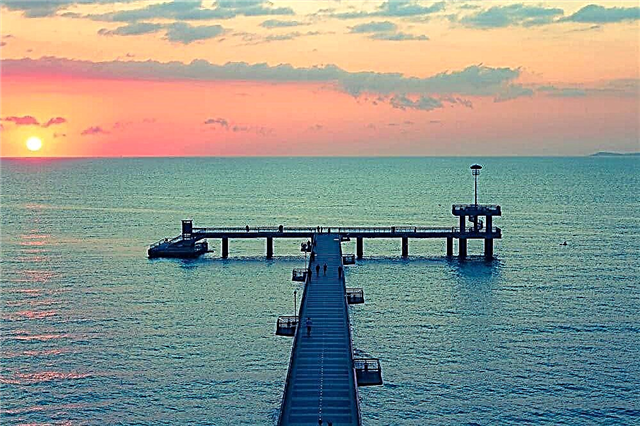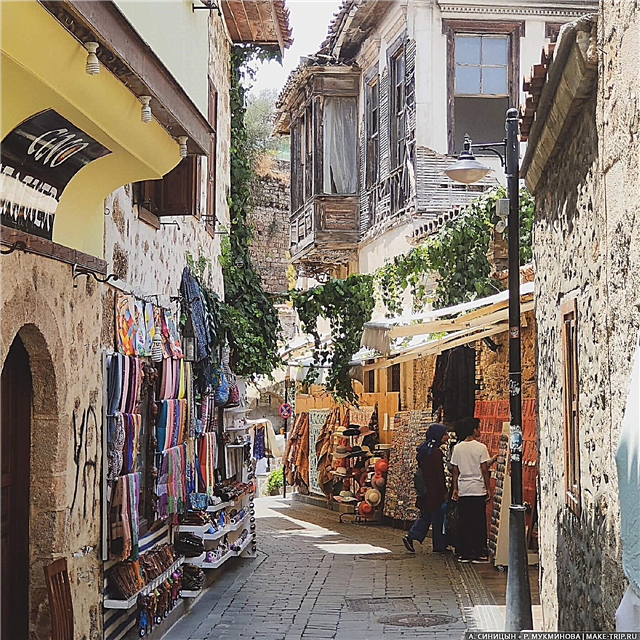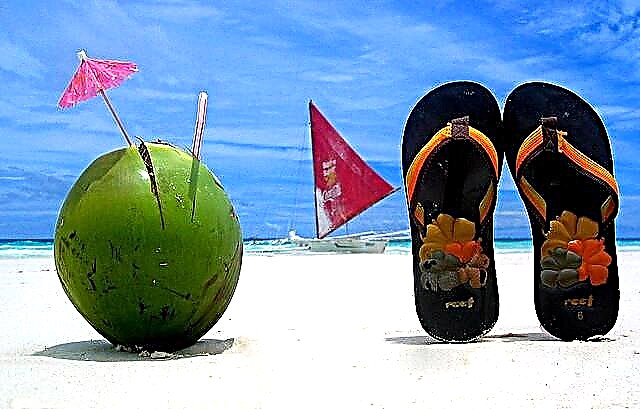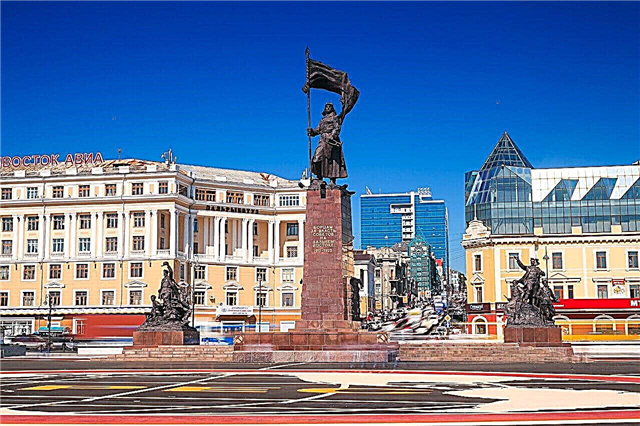Vladivostok is a port city located on a difficult terrain. Architectural traditions were formed according to European standards. The city plays the role of the cultural center of the Primorsky Territory. Vladivostok is rich in preserved historical planning, architectural and historical ensembles.
The city has an impressive cultural heritage. In total, there are more than a thousand monuments of history and culture. Among them there are federal and regional significance. Some monuments have become symbols of the city. All types of monumental sculpture can be seen in the cultural center of Primorsky Krai. Vladivostok is decorated with a large number of monuments to outstanding personalities and Primorye residents who died in military conflicts.
Historical and modern monuments of Vladivostok
List of the most famous monuments and sculptures of the city.
"To fighters for Soviet power in the Far East"
Consists of three sculptural groups, united in a triangular shape. The central part is the figure of a soldier of the People's Revolutionary Army. He holds a banner in his right hand, and a battle tube in his left. The right group - figures of a Baltic sailor, a Bolshevik worker and a soldier. In honor of the overthrow of the autocracy in 1917. The left group is a soldier from the front, a machine gunner and a worker. Dedicated to the liberation of the city from the Japanese invaders.

Triumphal arch of Tsarevich Nicholas
Two-thirds of the lining of the arch is the author's work of artists, sculptors and ceramists. From the side of the sea, there is an icon of the patron saint of sailors - Nicholas of Mirlikisky, consecrated in Jerusalem. The arch is made in a bright Byzantine-Russian style, decorated with coats of arms and monograms. The building was demolished during the Soviet era, in 2003 it was restored based on archival information.

Memorial complex on Korabelnaya embankment
The obelisk, 14 meters high, looks like a sail swollen from the wind. On the right is the Red Pennant ship, which has become a monument. Since 1975, the Red Banner Guards submarine S-56 has been stationed nearby. During World War II, her crew received 10 victories over enemy ships, and also crossed the Pacific and Atlantic oceans. The Eternal Flame stands in the central part.

Memorable sign to the founders of Vladivostok
In its place, sailors landed on the shore and established a military post. It is a titanium alloy obelisk. The monument resembles a ship's sail inflated by the wind. The structure is installed in the center of a special terrace. Concrete anchors are placed on both sides. A cast-iron memorial plaque is fixed on the wall. It opened in 1985 on the city's Korabelnaya embankment.

Monument to V.S.Vysotsky
The poet is shown sitting with a guitar on the steps on which lines from his works are carved. The idea was to portray him as simple as he had in life. The monument was opened in 2013 and is a musical monument. Next to the sculpture is a musical installation that plays his songs all day. Compositions in good quality were specially found.

"City of Military Glory"
In the center of a small square pedestal there is a stele topped with a two-headed eagle. A bronze cartouche is attached to it, on which is the text of the Decree of the President of the Russian Federation. On the back there is a cartouche with a drawing of the coat of arms of Vladivostok. There are four pylons in the corners, each with four bronze bas-reliefs. The images on them demonstrate the exploits of the townspeople in different years of Vladivostok's history.

Monument to N.N.Muravyov-Amursky
The Governor-General is presented in an elegant tunic with a scroll in his hand, which is the Aigun Treaty. His gaze is aimed at the Golden Horn Bay, Russian Island and the Eastern Bosphorus. The monument is located in the park where the ashes of Muravyov-Amursky are located. Installed in 2012 and made of bronze. On the wall are scenes from the history of the Primorsky Territory, including the signing of an agreement between Russia and China.
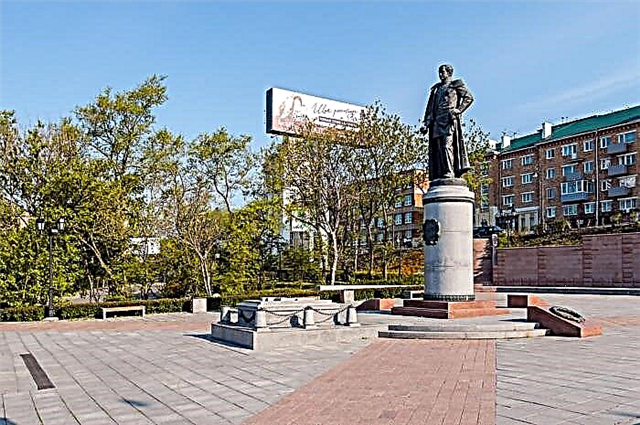
Monument to S.O. Makarov
The admiral is depicted with a telescope in his hands. Since 1999, it has been moved to the area of the central Embankment. A staircase leads to the monument. A bronze plaque with the words of Makarov about the need to develop the Russian North is attached to the obverse. According to tradition, every year on January 8, commanders and retirees of the fleet, cadets of a military university come to the monument in order to honor the famous admiral.

“To the sailors of the merchant marine. 1941-1945 "
Since 1967, the sculptural group has been standing on a platform of concrete slabs, on a 6-meter pedestal of gray granite. The Eternal Flame is burning at the foot of the monument. The structure consists of three sailors - a captain, a battle commander and a sailor with a stern flag, which is a symbol of the ship's honor. The silhouettes of 24 ships with the names of the crews are carved on separate bronze boards.

Monument to Cyril and Methodius
It represents two full-length figures of brothers with a primer and a cross in their hands. Behind the monument is a bell tower with a golden dome and a cross. The monument was consecrated with holy water and a prayer service. The structure is located on the top of the Eagle Sopka near the Youth Center of the Far Eastern State Technical University. Students come there before exams and ask the saints for help in passing, completing the ritual by ringing the bell.

Monument to border guards
Installed in 1997, it is a long stele faced with granite. There is a bell inside it. At the foot there are figures of four border guards along with dogs, guarding the border from the enemy. There is a fire on the monument, which is lit on memorable dates. On three sides of the monument, there are symbols of border guards of three eras: the Russian Empire, the USSR and the Russian Federation.

Monument to A. Pushkin
The sculpture is made in an unusual style. The poet is presented as reading his poems, holding a book in his hands. The face is completely immersed in the inner world, filled with contradictions and suffering, which is a feature of the monument. Located near the Pushkin Theater. Near the building, commemorative events are held in honor of the poet: Pushkin readings, celebrations of the writer's birthday.

Monument to Katyusha
A statue of a girl from a famous song looks into the sea. The heroine of the world-famous musical composition is a native of Vladivostok. The Love and Expectations park was built near the sculpture. The sketch of the monument was chosen by the public of the city. Bronze Katyusha has been located since 2013 on the steep shore of the Amur Bay in the Morgorodka area. The idea of creating a monument to local historian Nelly Miz.

Monument to G.I. Nevelsky
The monument includes a bust of the admiral and a stele. On the sides there are special plaques that tell how the Amur expedition took place. At the top of the stele there is a sculpture of a two-headed eagle. According to the urban legend, this is the Bird of Justice, which will turn to a person who has never sinned. The monument was erected in 1897 and is the first in the city of Vladivostok.

Monument to the Heroes of the Russian-Japanese War of 1904-1905
In the center of the architectural ensemble is the Archangel of the Heavenly Host Michael. In his hands he gripped the shield and the lowered sword. The figure is placed on a pedestal of red marble. On its front and back faces there are dedication inscriptions. On the side faces there are black and white paintings depicting sea and land battles. There are three pylons at the back, united by a bar.

Monument to Peter and Fevronia
The figures of the saints stand face to face on a pedestal and hold three doves in their hands. Birds are a reminder of a large family. Saints are considered the patrons of family happiness, love and fidelity. Walking around the monument, you can see a hare hiding at the feet of the figures.The monument was erected in 2011 on the territory of Pokrovsky Park within the framework of the national program "In the Circle of the Family".

Monument to S.G. Lazo
It is a full-length bronze figure standing on a massive granite pedestal. The commander of the Red Army clenches one hand into a fist and holds his cap in the other. Steps lead to the monument. The sculpture to the hero of the Civil War was erected in a park in the center of Vladivostok. The monument was opened in 1945, L. M. Pisarevsky became the sculptor and author of the composition.

Kilometer pole 9288
The stele, which was built on the platform of the railway station. Symbolizes the end of the Trans-Siberian Railway. A double-headed eagle flaunts at the top of the stele. Below is a sign indicating that the distance to Moscow is 9288 km. The building was built in 1996 during the reconstruction of the station. Previously, there was an ordinary 9288 km kilometer pole at this place.

Monument to Saint Ilya Muromets
The Russian hero is depicted as a saint in a long cloak. He holds a sword in his left hand, and the right one is raised for blessing. The sculpture is laconic. According to the idea, Ilya Muromets was the first defender of the borders of Russia, so he was made a defender of the border guards. The monument was erected in 2012 in the Admiral Square, next to Korabelnaya embankment. The sculpture is a gift to the city.

Monument to A. Solzhenitsyn
Bronze figure of a famous writer, 2.6 meters high. The monument depicts him descending from the gangway, moored to the shore of the ship. The Nobel laureate holds a book in his left hand. The monument was erected in 2015 on Korabelnaya embankment. The sculptor was Pyotr Chegodaev, who had been developing sketches for the sculpture for two years. The building was built in honor of the arrival of the writer to Vladivostok.

Monument to A.P. Chekhov
Bronze sculpture of a Russian writer, 2.3 meters high, who stayed in the city in the fall of 1890 for five days. The monument on a concrete base represents a playwright standing next to a bench looking towards the sea. The model was printed on a 3D printer, then produced in plaster, and then cast in bronze. The monument was erected in 2018 in the Chekhov square for the City Day.

Monument to Yul Brynner
The Hollywood actor is portrayed as the proud and domineering king of Siam. For this role in the film "The King and I", the native of Vladivostok received an Oscar. The monument was erected in 2012 near the house where Brynner was born. The sculpture was installed on disinterested contributions of one of the Primorsky banks and several patrons of the arts. The opening of the monument took place during the Pacific Meridian International Film Festival.
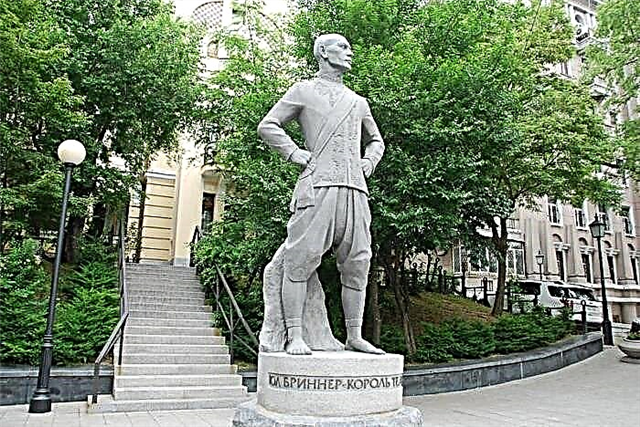
Monument to the Victims of American Aggression
The monument is dedicated to the fallen passengers of the plane that came under fire from American fighters. It looks like an obelisk in the form of a large cylindrical column. Crowned with a bronze capital and placed on a granite pedestal. On the capitals there is a composition consisting of four banners of a five-pointed star in a laurel wreath. In the lower part there is a bas-relief of cartouches, torches and oak wreaths. The names of the victims are carved into the cartouches.
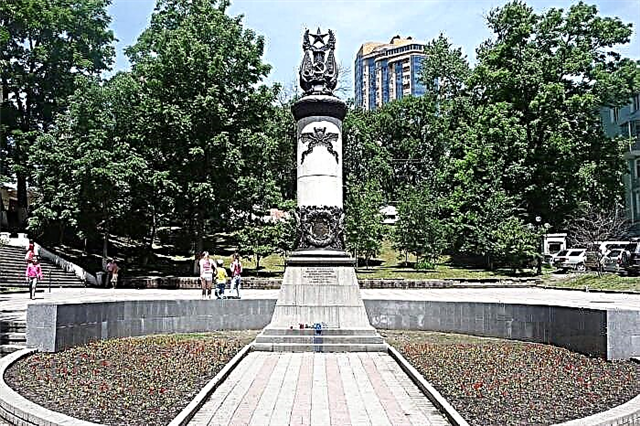
Memorial to Vasily Oshchepkov and his Japanese teachers
In the center of the sculptural group is the Russian athlete Vasily Oshchepkov, who is awarded a black belt from the hands of the founder of judo Jigoro Kano. The memorial complex includes a sculpture of two tiger cubs that are being played and a Japanese arch - a symbol of friendship between Russia and the Land of the Rising Sun. The animals symbolize that Vasily went to the zoo in order to study the motor skills of an animal and apply it in judo and sambo.

Monument to Eleanor Prey
A symbol of friendship between the American and Russian people, as well as the social responsibility of big business to the city. A bronze sculpture of a famous American woman stands in the area of Pochtovy Lane. The monument turned out to be very alive. The American woman seems to be walking down the steps to the main post office. Her right hand rests on the railing, and her left rests an envelope with a letter to her chest. Nearby on the wall is a quote from her letter about Vladivostok.

Monument to miners
A monument in the form of a three-stage pyramid at the site of the execution. A five-pointed star adorns the top. There is a table in front of the structure. The monument is surrounded by concrete pillars connected by an anchor chain. At the entrance to the site there are models of sea mines. Built in 1954 for the minerals of the Vladivostok Fortress, who were shot in 1907. The author of the monument is architect M. Smirnov.

"Sailor of the overseas voyage"
A sculpture of a merchant sailor in the early 80s. A bronze sailor wearing a denim jacket, bell-bottomed jeans, and a buckle belt. As conceived by the author, he has just stepped off the steamer. The guy holds the packages with foreign purchases tightly. With his right hand he tries to stop the car using a characteristic gesture. Vinyl records under the sailor's arm are a serious shortage in the past.

Sundial at the Marine Station
A quay bollard that displays the time using sundial technology. The art object previously functioned at the city's pier, where it was discovered during construction work. The shadow that falls on the dial from the bollard shows the exact time to residents and tourists during the day. The facility was built in 2013. The bollard changes its position on a monthly basis to indicate the month and more precise time. There is a table with a description on the wall of the Seaport.

"Tigers"
Two bronze tiger cubs stand on the embankment of Sportivnaya Gavan. This is a gift to the city from the World Wildlife Fund. The sculpture symbolizes the care of the present and future generations for the preservation of the Amur tiger. The statues were installed in 2013. The composition became the completion of the "Tiger Trail", donated earlier. In 2000, the city became the cradle of the festival - Tiger Day, which is the dignity of Vladivostok.

Rostral column
A stele topped with a bronze model of the Manchurian transport. Below there is a statue of a Pacific sailor, which offers to drive to Vladivostok. The words of Lenin are carved on the pedestal of the building. The discovery took place in 1960. In 2012, the convoy was turned 180 degrees to the highway in preparation for the 2012 APEC summit. This is one of the favorite places for newlyweds for their wedding walks.


